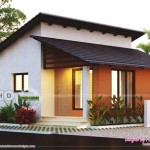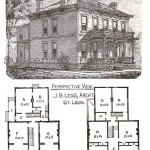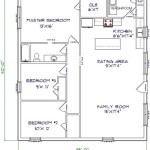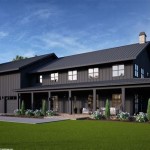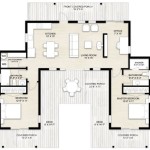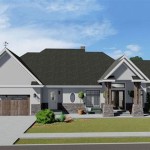Dog Trot Style House Plans
Dog trot houses are a type of vernacular architecture that originated in the American South. They are characterized by their long, narrow shape and their two porches, one on the front and one on the back. The porches are separated by a breezeway, or "dog trot," which allows air to circulate through the house.
Dog trot houses were first built in the early 1800s, and they remained popular until the early 1900s. They were typically built by farmers and other rural residents, and they were designed to be simple and affordable. Dog trot houses are typically one story tall, with a central hallway that runs the length of the house. The bedrooms are located on either side of the hallway, and the living room and kitchen are located at the front and back of the house.
Dog trot houses are known for their simple beauty and their adaptability to different climates. They are also relatively easy to build, which makes them a good choice for do-it-yourselfers. If you are looking for a house plan that is both stylish and functional, a dog trot house may be the perfect choice for you.
Advantages of Dog Trot Style House Plans
There are many advantages to building a dog trot house. Some of the most notable advantages include:
Energy efficiency:
Dog trot houses are naturally energy efficient because they allow air to circulate through the house. This helps to keep the house cool in the summer and warm in the winter.Affordability:
Dog trot houses are relatively affordable to build. This is because they are simple in design and do not require a lot of materials.Adaptability:
Dog trot houses can be adapted to different climates and lifestyles. For example, they can be built with larger porches for warmer climates or with smaller porches for cooler climates.Style:
Dog trot houses are known for their simple beauty. They have a timeless appeal that makes them a popular choice for homeowners of all ages.
Disadvantages of Dog Trot Style House Plans
There are also some disadvantages to building a dog trot house. Some of the most notable disadvantages include:
Privacy:
The porches on a dog trot house can be less private than the porches on other types of houses. This is because they are open to the breezeway.Noise:
The breezeway on a dog trot house can allow noise to travel more easily through the house. This can be a problem if you have noisy neighbors or if you live in a busy area.Maintenance:
The porches on a dog trot house require more maintenance than the porches on other types of houses. This is because they are exposed to the elements.
Overall
Dog trot houses are a type of vernacular architecture that has been popular in the American South for centuries. They are known for their simple beauty, their energy efficiency, and their affordability. However, they also have some disadvantages, such as their lack of privacy and their potential for noise. Overall, dog trot houses are a good choice for homeowners who are looking for a stylish and functional home that is also affordable to build.

Dog Trot House Plan Dogtrot Home By Max Fulbright Designs

Dog Trot House Plan Dogtrot Home By Max Fulbright Designs

Our Popular Camp Creek Dog Trot Design Houseplans Cabins Floorplans House Plans Cabin Floor

Dog Trot House Plan Dogtrot Home By Max Fulbright Designs
Dogtrot House Wikipedia

3 Bedroom Dogtrot House Plan 92318mx Architectural Designs Plans

Dogtrot House Plan Large Breathtaking Dog Trot Style Floor Plans Cabin

Great Compositions The Dogtrot House

Dog Trot Style Farm House Farmhouse Plans

Dogtrot House Natural Building Blog


